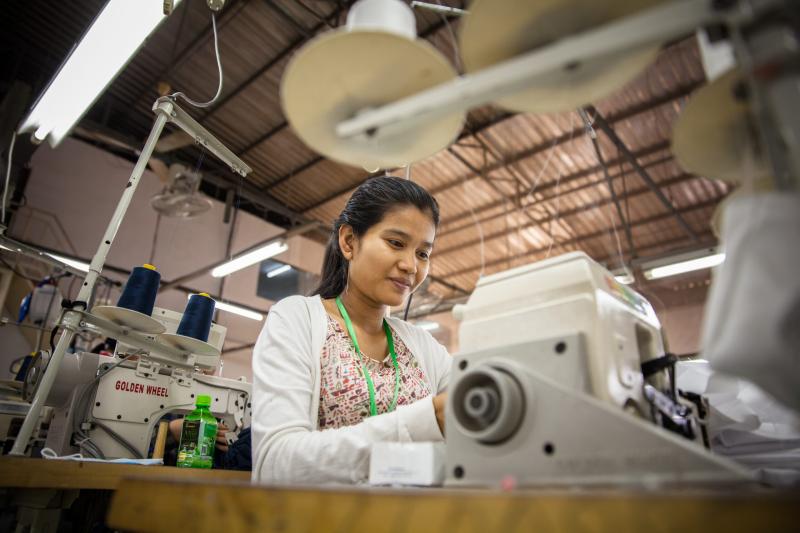Levi Strauss’ ‘Worker Well-being Guidebook’ based on Harvard’s SHINE study

Credit: Levi Strauss & Co.
Iconic global brand Levi Strauss & Co. (LS&Co.) has published a “Worker Well-being Guidebook,” which offers new approaches for corporations and factory owners to improve the health and well-being of apparel workers — some of the most vulnerable populations — around the world. The guidebook, which provides insight into strategies for identifying locally relevant ways to improve the well-being of garment factory workers and their families, is based in part on foundational research conducted by the Harvard Chan SHINE team.
Supported by the Levi Strauss Foundation, the SHINE team surveyed more than 13,000 workers in LS&Co. supply chain factories across five countries — Cambodia, China, Mexico, Poland, and Sri Lanka — over three years, beginning in 2017. Through hundreds of group conversations and direct interviews with workers and suppliers, this multi-year study highlighted that workplaces that cultivate trust, respect and fairness lead to meaningful improvements in gender equality, well-being and productivity.
[gz_pull_quote attribution=”— Kimberly Almeida, director of programs, Levi Strauss Foundation”]“Thanks to SHINE, we have a comprehensive view of the status of well-being — and its drivers — in the garment supply chain.”
[/gz_pull_quote]
According to SHINE Executive Director Eileen McNeely, “Through this three-year study, we were able to define what well-being means in the apparel context, measure it and identify what drives it for garment workers. Our findings reinforce the point that people are foundational to business success and that how work gets done deeply affects people’s lives. As such, raising well-being and equity among workers helps build resilient supply chains, business success and further sustainable development.”
The findings from the multi-year research study conducted by SHINE were key, explains Kimberly Almeida, Levi Strauss Foundation director of programs. “We now understand the key indicators for measuring worker health, satisfaction and engagement. These insights were critical as we updated our approach to the worker well-being initiative, which focuses on the proven ways to improve well-being in the workplace by addressing the physical environment, factory operations and systems, and worker/manager relationships.”
The updated guidebook will help apparel suppliers identify worker needs and to develop solutions, focusing on gender equity, workplace environment, and policies and systems.




